There are many types of trees with heart-shaped leaves around the world, and they play an important part in the diversity of the natural landscape. Some well-known trees with heart-shaped leaves include the Northern Catalpa, Empress Tree, and Eastern Redbud. These tree species stand out not only for their unique leaf shapes but also for the splendid beauty of their flowers and fruits. The diversity and allure of trees with heart-shaped leaves have attracted the attention of gardeners and natural explorers for many centuries.
Different types of Trees with Heart-Shaped Leaves
1. White Mulberry
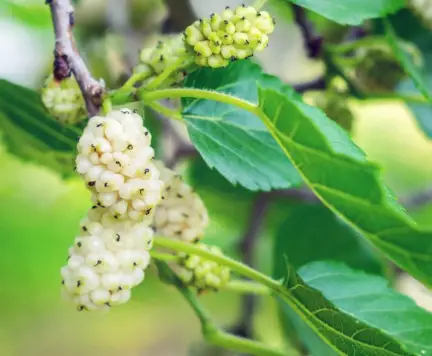
Though it comes from India, the White Mulberry is grown in many other countries, including Mexico, the US, Australia, Turkey, Iran, Kyrgyzstan, and Argentina. It grows quickly to small to medium-sized trees. Heart-shaped leaves that can grow up to 12 inches long and have deeply lobed leaves are complemented by the tree’s thin, yellowish-brown bark. Sandey loam, clayey loam, or regular loam soils that drain well are ideal for these trees, which are often grown to feed silkworms for the manufacture of silk.
2. Yellow Catalpa
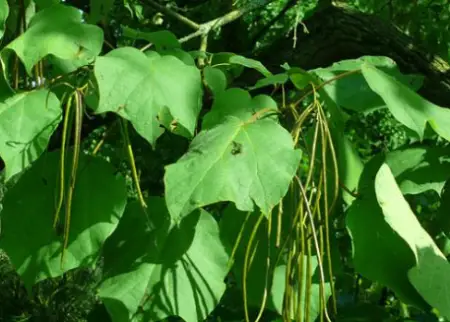
Originally from China, Yellow Catalpa is now grown in Europe and North America, with a typical height of 20 to 30 feet. Between July and August, the plant’s inflorescences bear clusters of creamy white blooms with a bright yellow core. The tree’s striking attractiveness is enhanced by its dark green leaves, which have three separate lobes and resemble hearts.
3. Dove Tree
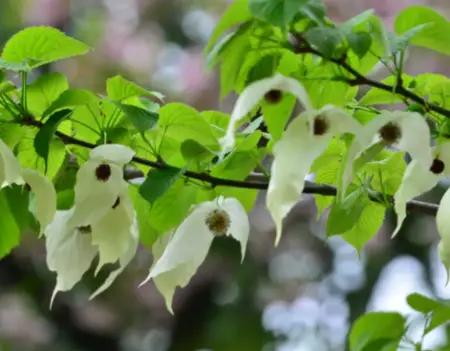
Within the Nyssaceae family, the Dove Tree, also called Davidia Involucrata, is a rare medium-sized deciduous tree. Reaching heights of 66 to 82 feet, its handkerchief-like white bracts around a purplish-red flower head, making it unique. Its leaves are more alluring due to their linden-like ovate-cordate shape. This tree has late spring blossoms and is best propagated by seeds, which need special care because of dormant periods.
4. Silver Linden

Tilia Tomentosa, often known as the Silver Linden, is a gorgeous member of the Malvaceae family of linden trees. It is indigenous to regions of southeast Europe and southwest Asia. Growing to astonishing heights of 66 to 115 feet with a trunk diameter of up to seven feet, it is a medium-altitude specialist. Its leaves are triangular to rounded-ovate in shape and are scattered sporadically, measuring 1.5 to five inches in length. This tree, which bears pale yellow hermaphrodite blooms in late summer, is hardy and can withstand heat, pollution, compaction of the soil, and drought. It is a great option for street planting, particularly in USDA hardiness zones 4 through 7.
5. Black Mulberry
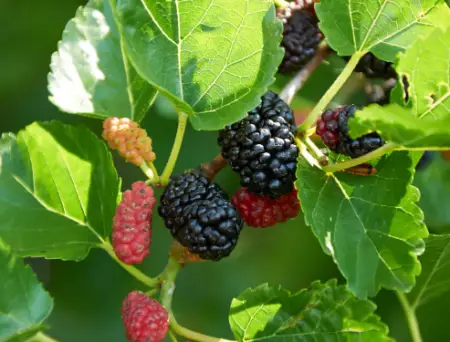
Within the Moraceae family, the Black Mulberry, or Morus Nigra, is a commercially significant plant. Its leaves, which are native to the Iberian Peninsula and southwest Asia, are normally four to eight inches long and two to four inches wide, though they can occasionally grow up to nine inches on vigorous stems. The fruit is a cluster of tiny, delicious drupes that ripens to a dark purple or nearly black color. Wind pollination is used to produce fruit instead of cross-pollination.
6. European Linden
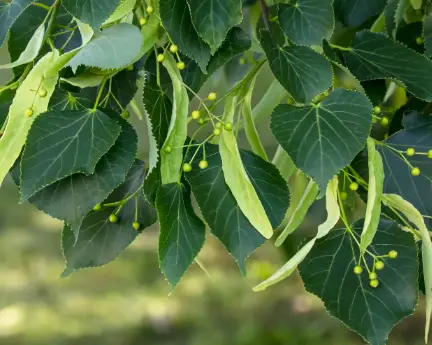
The European linden grows naturally in areas where its parent trees, Tilia platyphyllos and Tilia cordata, are native. Its leaves, which are two to six inches in height and two to five inches in breadth, have a leathery feel and can grow to a height of 49 to 164 feet, with a trunk diameter of up to eight feet. Early summer brings flower clusters of four to ten flowers with subtending bracts that resemble leaves and are yellow-green in color. Layering makes this hybrid tree easy to spread, but clean equipment are needed to prevent contamination.
7. Western Redbud
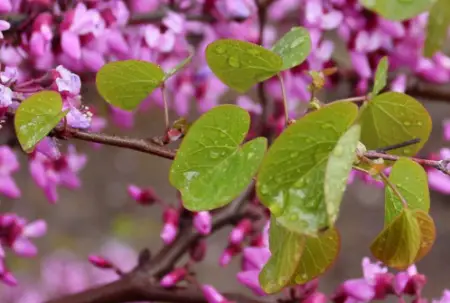
A little tree widely found in the mountains and foothills of Southwest America, encompassing California, Arizona, and Utah, is the Western redbud, which belongs to the Fabaceae family. Its vivid purple, magenta, or pink blossoms bloom from March to May, and in colder times, its leaves at higher elevations can turn crimson or gold. It can withstand at least six hours of direct sunlight per day and can also withstand some shade. It grows best in full sun. These hardy trees may thrive in a variety of environments, albeit they favor loam or sandy loam soil types.
8. Italian Alder

The scientific name for Italian alders is Alnus Cordata, and they belong to the Betulaceae family. They are native to northern Corsica and the southern Apennine Mountains. All around Europe, especially in countries like the United Kingdom, France, the Azores, Belgium, and Spain, they have naturalized. Reaching heights of 80–90 feet, they have heart-shaped, glossy green leaves with serrated edges that remain from April through December. These trees react well to routine pruning, which makes them popular choices for ornamental planting. They also make fantastic bonsai subjects. Their best growth is encouraged by adding organic elements to the soil, such as coffee grounds or compost.
9. Southern Catalpa
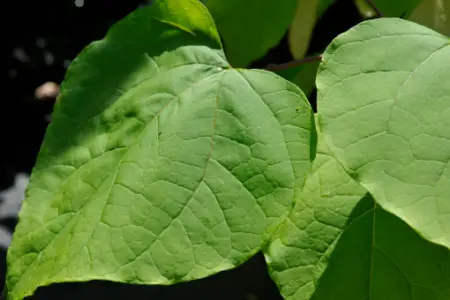
Also referred to as the Indian bean tree or cigar tree, the Southern catalpa is a well-liked, medium-sized tree that grows quickly and is endemic to the Southeast of the United States. It has huge, heart-shaped, bright green leaves and trumpet-shaped, white flowers with yellow dots within that bloom in clusters of 20 to 40. It may reach heights of 50 to 60 feet with a trunk diameter of up to 3 feet. These trees require full sun and moist soil to flourish, but they can also be easily multiplied by cuttings, which eliminates the need for extra purchases.These beautiful trees prefer places with moist soil and full sun. You can propagate them with their cutting, so you do not need to buy extra if you need more.
10. Turkish Hazel
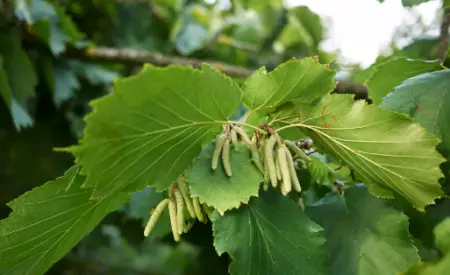
The Turkish Hazel, or Corylus Colurna, is a deciduous tree that grows to a height of 82 feet and a widening conical crown. It is native to southwest Asia and southeast Europe. The thick, corky, pale grey bark of the plant accentuates the heart-shaped leaves, which have soft hair on both surfaces and coarsely shallowly lobed to double-serrate margins. Its unisexual blooms open in catkins in the early spring, before the leaves.
Because it has separate male and female individuals, it is best to check with the nursery before buying to be sure of the tree’s sex. Though they may eventually withstand extreme heat, cold, and drought, these trees like full light and well-drained soil.
11. Empress Tree
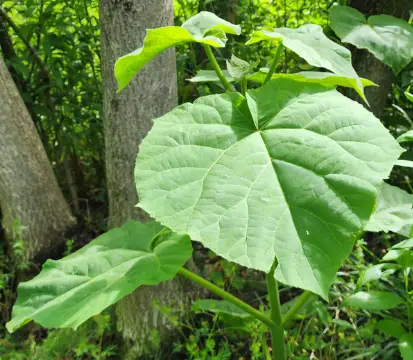
Paulownia Tomentosa, also known as the Empress Tree, is a fast-growing hardwood tree that is indigenous to western and central China. Growing 20 feet in a year and reaching 33 to 82 feet in a decade, some reach 150 years of age. Its fragrant violet-blue flowers bloom before the leaves, forming a mesmerizing show, and its enormous, heart-shaped leaves, which measure six to sixteen inches, are produced in pairs. Its sturdy wood is used to make musical instruments, furniture, sculptures, and traditional objects. For newborn girls, it was customary in Japan to plant an Empress Tree, from which wedding chests were carved.
12. Carolina Basswood
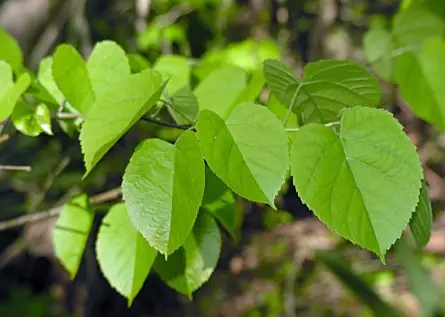
A member of the Malvaceae family, the Carolina Basswood may reach heights of 98 feet and a trunk diameter of 4.9 feet. It is a native of Mexico and the southeast and southern United States. It can be identified by its huge, heart-shaped, silvery leaves with finely toothed edges. Unlike other Tilias, it produces clusters of 10 to 24 larger flowers. Fruits are 0.5 inches in diameter, downy, and have a pointy fruit bract at the base. Its wood is useful for medicine, but it should not be burned. This hardy tree likes soil that is consistently moist and receives at least seven hours of sunlight each day.
13. Quaking Aspen (Populus Tremuloides)
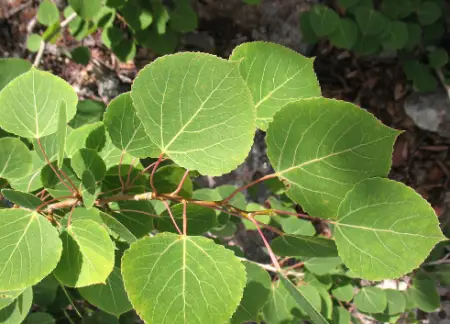
Native to colder climates in North America, the Quaking Aspen (Populus Tremuloides) has heart-shaped leaves and smooth, whitish bark with black scars. These trees, sometimes called popple, white poplar, American aspen, trembling poplar, mountain or golden aspen, and trembling aspen, usually survive for 80 to 100 years, with some living for over 200 years. Their glossy green or red leaves turn golden yellow and have a dull underside. They can grow up to 82 feet tall. They create clonal groves devoid of rhizomes by multiplying through their roots. Unwanted juvenile trees can be simply removed with clean equipment when male and female trees are kept apart.
14. Hearts of Gold Redbud
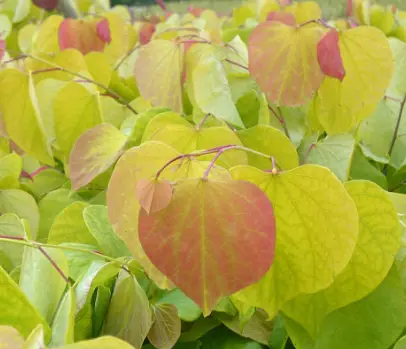
The Gold Hearts Redbud is a deciduous tree that frequently grows in numerous stems and has heart-shaped leaves. Growing to a height of 16 feet and a width of 19 feet, the immature orange-red leaves turn dazzling gold-yellow in full sun before developing into a yellow-green shade. Its vibrant foliage, which enhances its surroundings, is the appealing aspect that lies beyond its blossoms. It grows best in slightly shaded or full sun, and it likes soil that is quite healthy with compost added. For blossoming, there must be a winter chill and consistent rainfall. It’s not necessary to fertilize with a lot of phosphorus when it first starts to bloom.
15. Henry’s Lime
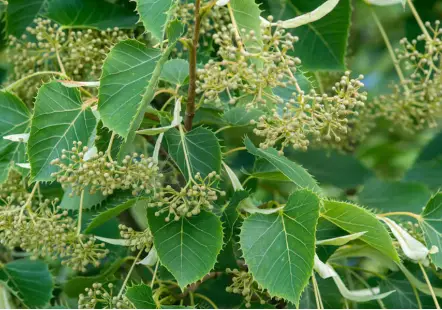
Ernest Wilson brought Henry’s limes from China in 1901, and they are now common trees in several Chinese provinces. With its heart-shaped, sea green leaves that are four inches long and have ciliate borders, this tree can grow up to 82 feet tall. In the fall, clusters of around 20 fragrant, light blossoms bear fruit. It thrives in a variety of light settings, including shade and compacted soil, and in its early growth stages it gains from the use of organic fertilizer.
16. Eastern Redbud (Cercis Canadensis ‘Flame Thrower’)
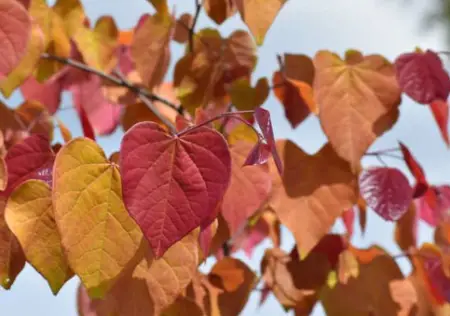
Native to eastern North America, the Eastern Redbud (Cercis Canadensis ‘Flame Thrower’) is a deciduous shrub that grows from southern Michigan to central Mexico and New Jersey. It also has populations in southern Ontario and California. There are medical benefits for its inner bark and roots to cure congestion, vomiting, and fevers. The large, heart-shaped leaves grow three to five inches in width and height before turning green. They are initially crimson. From spring to early summer, clusters of vivid magenta-pink blooms appear. It thrives in USDA hardiness zone 6b, needing less feeding once established and benefiting from early soil enrichment. It can survive for 50 to 70 years.
17. American Basswood
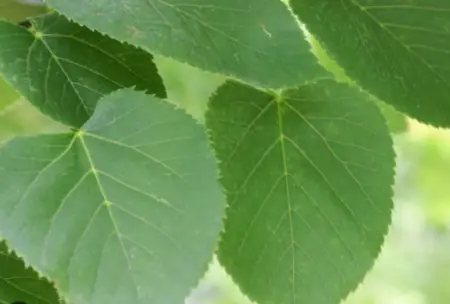
Belonging to the Malvaceae family, the American Basswood grows in eastern North America, extending from southeast Manitoba to New Brunswick and south to South Carolina, the Niobrara River, and parts of northeastern Oklahoma and Nebraska. It has oblong to cordate leaves with short petioles that grow alternately, and it is well-known for growing quickly. Climbing to heights of 60 to 120 feet and having a trunk diameter of three to five feet, it bears leaf-like whitish-green bracts and small, fragrant yellowish-white flowers in clusters of six to twenty. Its wood is less appropriate for burning, but its leaves have long been used medicinally.
18. Northern Catalpa
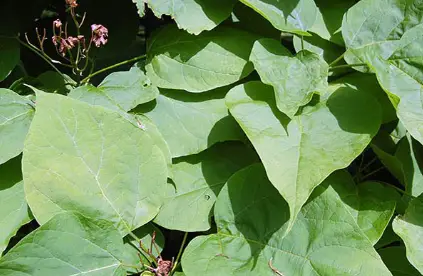
The Northern Catalpa, a popular tree in the US, may reach heights of 50 to 100 feet and a diameter of 40 feet when its canopy is fully extended. It is native to the midwestern sections of the country and is also known by the names cigar tree, hardy catalpa, western catalpa, bois chavanon, catawba tree, and Catalpa Speciosa. Its caterpillars are what attract anglers; they are good for fishing.
Its trumpet-shaped blooms, which are 1-2 inches diameter and have stripes of yellow, white, and purple, are accompanied by big, heart-shaped leaves that are 8–12 inches long and 6–8 inches broad. It is one among the last trees to begin producing leaves in the early spring. It grows best in full sun and moist, acidic soil, but it needs plenty of room to spread out and grow quickly.
19. Caucasian Lime (Tilia x euchlora)
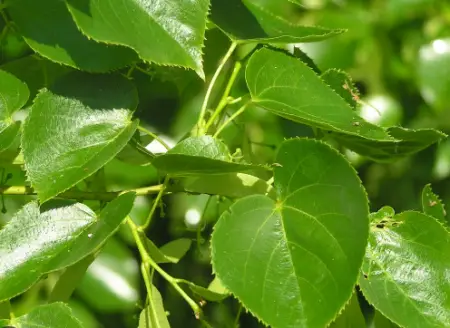
The Caucasian lime, or Tilia x euchlora, is native to the Crimean peninsula, which is close to Ukraine. It is sometimes referred to as the Caucasian linden and the Crimean lime. These massive deciduous trees, which are a hybrid of Tilia dasystyla and Tilia cordata, normally reach heights of 40 to 60 feet and a width of 20 to 30 feet. They grow best in wet, well-drained soil in USDA hardiness zones 3 to 8, with glossy, heart-shaped leaves and creamy to white blooms that bloom from spring through summer. They can withstand both partial and full sun.
People Who Read This Also Read:
- Red Flowering Dogwood Tree
- Types of Trees With Smooth Gray Bark
- Types of Pine Trees
- Types of Trees With Long Seed Pods
- Types of Trees With Spiky Seed Balls
- Types of Small Florida Palm Trees
- Types of California Oak Trees
- Types of Locust Trees
- Types of Tree Leaves
- Types of Ficus Trees
- 20 Dwarf Evergreen Trees






